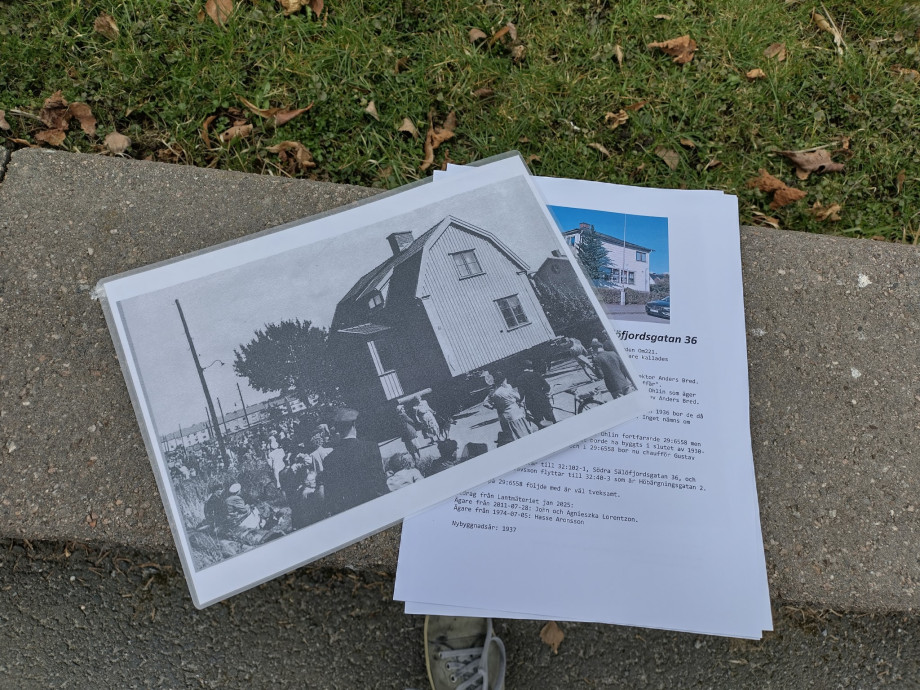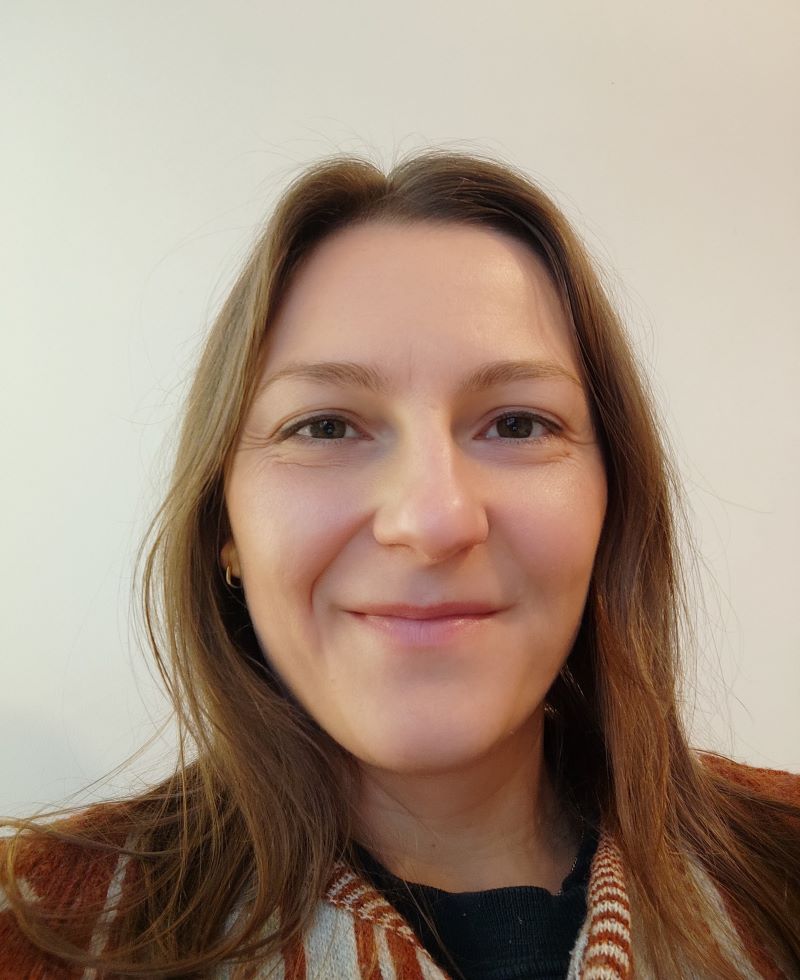This is the first blog post about the Infrastructural Citizen Week 2025, which was organised by the Energy Lives! project in Gothenburg, Stavanger and Aarhus from 24-28 March 2025. At Chalmers, the project team organised a walk together with residents from Lundby in the north of Gothenburg. Nathalie Bergame reflects on the walk through Lundby, a suburb where houses from Skarvik were moved to in order to make place for the oil refinery in 1947.
Blogginnlegg
Blogginnlegget er skrevet av

“Where is the spirea? I was wondering then, and I could actually see it, right behind the fence of the oil refinery,” one of the participants of the historical walk tells us. He had been searching for the remnant of his ancestors on a past visit to the oil infrastructure site and discovered plants that once belonged to the garden of his grandparents. We – four locals and five researchers – are out in the field, listening to the memories of relatives to those who lived through a move. A move from an idyllic place long gone. An idyllic place where residents planted spirea in their gardens for many years to come. An idyllic place that would only a few years later be deconstructed to give way for an oil refinery. An oil refinery which then came from the US. Outside of Los Angeles it had been waiting for shipment to China, to serve the US in the production of oil during the Second World War. After the war, the need by the US for installing an oil refinery in China ceased. Stora Kopparbergs Bergslags AB, then a leading company within the forest industry, acquired it in 1946, idle as it was, as Stig Öhgren, a former refinery employee, writes in his book Spelet om ett raffinaderi [Swedish for how an oil refinery came into being]. The refinery arrived in Gothenburg 1947. One of the participants replies “Oh, so then it was Mao’s fault!” and we all chuckle.
We are out in the field on an ordinary Thursday afternoon, the weather is a bit chilly, grey skeys. We are well equipped with coffee and tea as well as sandwiches and cinnamon buns. We start off in Lundby, a residential area located in the vicinity of the oil harbour subject of our study. Here we meet at one of the houses that once stood a few kilometres further west, located where now an oil refinery stands.

Before the refinery arrived, in the early 1940s a few dozen houses without access to running water were built in the Skarvik area that participants describe in idyllic terms: glittering water, away from the city, the perfect place to grow up and bath in the sea. Some of the remnants are still visible, we learn from one of the locals. Some bricks, some plants that belonged to a garden. Modernity was at the footstep and entered. The land on which people had built their homes was filled with life. Land was not empty, but it had to be emptied in the name of welfare and progress, oil and energy security. Despite reparations and support with the move from the side of the City of Gothenburg, the emotional impact of the change remains archived in the bodies of locals. The emotions imbued in a land of the past are otherwise invisible but today we bring them to the light.

Change of scenery. An hour later we find ourselves at the entry of Rya Skog, a nature reserve that is delicately squeezed in between industrial infrastructure with one side facing the sea. Here we continue to listen to the stories of locals, while seeing excess gas burning off from a flare stack only a few hundred meters away. The flame is big today, I have seen it smaller when we visited earlier in the spring. The mood is jolly, the hot beverages in our hands warm, the sugar of the pastries sweet. A sense of pride is in the air, - a reverence of sorts – for the past that locals are connected to. Hands on hearts. We understand that large infrastructures transform material spatial relations and connections. We understand also that inside, in people’s hearts, relations to land and lives remain intact and very real. Even alive.
Memories remain. Grief remains. A paradise lost. How did it feel for people to look through the windows of their homes in which they had lived in for a decade and suddenly be confronted with a completely different scenery? The relative of one of the locals fell sick in grief after the move away from Skarvik, the idyll. For those who moved their houses, how disorienting must it have been to have new neighbours but be living in the same house? We get a glimpse of what it means to build large infrastructures on land that is never empty. Of the myriad of creatures that relate to land, some are affected more, while others are less. We know that we need oil infrastructures to propel and keep up our carbon lives. But we could know more about the lives touched, emotions felt and the stories untold. Today we contributed a little bit.
